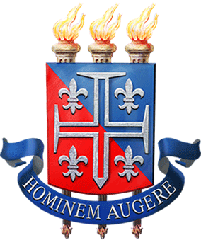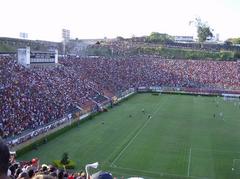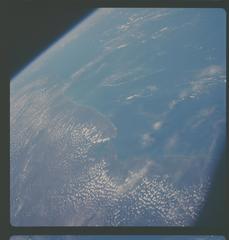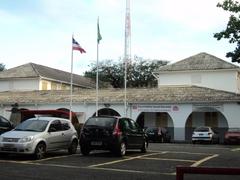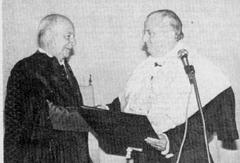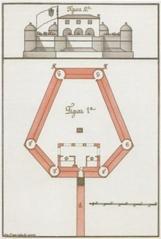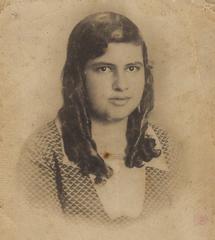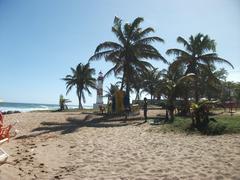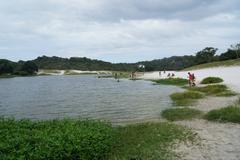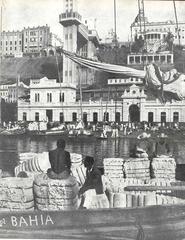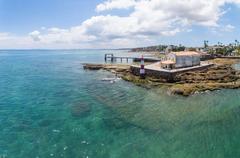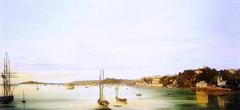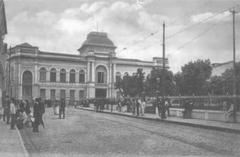Cathedral of Salvador: Visiting Hours, Tickets, and Historical Guide
Introduction
The Cathedral of Salvador (Catedral Basílica de Salvador), also known as the Primatial Cathedral Basilica of the Transfiguration of the Lord, is a remarkable testament to Brazil’s colonial past, religious traditions, and cultural syncretism. Situated in the UNESCO-listed Pelourinho district—the heart of Salvador’s historic center—it serves as both a spiritual beacon and an architectural masterpiece. This comprehensive guide explores the cathedral’s history, architectural features, visitor information, and its enduring role in Salvador’s cultural landscape (History Hit, Bahia.ws, GPSmyCity, Wikipedia).
Location and Access
The Cathedral is centrally located in Pelourinho, Salvador’s vibrant historic district, famed for its cobblestone streets, colorful colonial buildings, and rich Afro-Brazilian heritage. Visitors can easily reach the cathedral on foot from within Pelourinho. Taxis and ride-sharing services have drop-off points nearby, but note that many streets are pedestrian-only.
History and Significance
Early Foundations
Founded in the mid-16th century shortly after Salvador became Brazil’s first colonial capital, the original cathedral was built by Jesuits who played a crucial role in evangelization and education. The current structure, consecrated in 1654, replaced earlier buildings and quickly became the religious and social heart of Salvador.
Architectural Evolution
The cathedral exemplifies Renaissance and Mannerist design, with a façade constructed from lioz limestone imported from Portugal. Its interior features gilded woodwork, sacred paintings, and intricately decorated chapels. The use of local materials and motifs alongside European influences reflects Salvador’s multicultural identity (GPSmyCity).
Cultural and Religious Role
As the seat of the Archdiocese of Salvador and the symbolic mother church of Brazilian Catholicism, the cathedral not only hosts daily worship and major liturgical celebrations but also anchors Salvador’s unique blend of Catholic and Afro-Brazilian traditions. Its presence near the former slave market in Pelourinho is a poignant reminder of the city’s complex history (History Hit).
Restoration and UNESCO Recognition
In the late 20th century, extensive restoration projects revitalized both the cathedral and the surrounding district. Salvador’s Historic Centre, including the cathedral, was designated a UNESCO World Heritage Site in 1985, underscoring its global cultural value (History Hit).
Visiting Hours and Ticket Information
- Monday to Saturday: 8:00 AM – 5:00 PM
- Sunday: 9:00 AM – 1:00 PM
Hours may vary on public holidays and during special religious events. Always check the official website or local tourism offices before your visit.
- Admission: R$5–R$10 (approx. $1–$2 USD), with discounts for students, seniors, and children.
- Tickets: Purchase on-site or via authorized platforms. Donations are welcomed to support preservation efforts.
Accessibility and Facilities
- Entrances: Main entrance has steps; ramps and handrails available at secondary doors.
- Wheelchair Access: Most areas are accessible, though some historic sections may have uneven floors.
- Restrooms: Available on-site.
- Gift Shop: Sells religious souvenirs, books, and local crafts.
- Safety: Pelourinho is well-patrolled, but standard precautions are advised.
Guided Tours and Visitor Experience
Guided tours are offered in Portuguese, English, and Spanish. These tours, lasting 1–2 hours, provide rich context on the cathedral’s history, art, and architecture. Private and group tours can be booked through local operators or via the visitor center. Photography (without flash or tripods) is generally allowed, except during services.
Architectural Highlights
- Façade: Renaissance and Mannerist, built from lioz limestone with classical proportions.
- Interior: Gilded altars, grand nave, 13 intricately decorated chapels, and a celebrated sacristy with jacaranda woodwork.
- Azulejos: Extensive Portuguese blue-and-white tilework, the largest collection in Latin America.
- Pipe Organ: 18th-century instrument used during special events.
- Artworks: Paintings, sculptures, and Baroque decorations by renowned colonial artists.
Spiritual and Cultural Events
The cathedral is active in Salvador’s religious life, hosting daily Mass, major Catholic festivals (such as Easter and the Feast of the Transfiguration), and community gatherings. During Holy Week and other significant events, the cathedral becomes a focal point for processions and concerts that highlight Salvador’s rich spiritual traditions.
Nearby Attractions
- Church and Convent of São Francisco: Renowned for its gilded Baroque interior.
- Church of Our Lady of the Rosary of the Black People: Highlights Afro-Brazilian religious traditions.
- Pelourinho District: Offers museums, local markets, artisan shops, and vibrant music venues.
- Afro-Brazilian Museum and Lacerda Elevator: Other cultural sites within walking distance.
Practical Tips
- Best Time to Visit: Weekday mornings for fewer crowds.
- Dress Code: Modest attire—shoulders and knees covered.
- Language: Guided tours increasingly available in English and Spanish.
- Safety: Remain vigilant, especially after dark; avoid displaying valuables.
- Photography: Permitted without flash; be respectful during services.
Frequently Asked Questions (FAQ)
Q: What are the Cathedral of Salvador’s visiting hours?
A: Monday to Saturday, 8:00 AM–5:00 PM; Sunday, 9:00 AM–1:00 PM.
Q: How much is admission?
A: R$5–R$10 (approx. $1–$2 USD), with discounts for students, seniors, and children.
Q: Are guided tours available?
A: Yes, in Portuguese, English, and Spanish; booking in advance is recommended.
Q: Is the cathedral accessible for people with disabilities?
A: Most areas are accessible; ramps provided at some entrances.
Q: Can I take photos inside?
A: Photography is allowed without flash or tripods, except during services.
Recommendations for a Memorable Visit
- Arrive early for a quieter experience.
- Book a guided tour to deepen your understanding of the cathedral’s history and art.
- Attend a Mass or musical event for an immersive cultural encounter.
- Explore surrounding Pelourinho to appreciate Salvador’s broader heritage.
Sustainability and Preservation
Ongoing conservation projects, supported by local authorities and international organizations such as UNESCO, ensure the cathedral’s preservation. Visitors are encouraged to respect preservation guidelines and support maintenance through donations or participation in tours.
Explore More
For additional information on tours, tickets, and up-to-date visitor tips, consult GetYourGuide and local tourism boards.
Summary
The Cathedral of Salvador is a must-visit destination for anyone interested in Brazil’s architectural grandeur, religious history, and diverse cultural heritage. Its striking blend of Renaissance, Mannerist, and Baroque elements, combined with its central role in Salvador’s spiritual and community life, make it a profound symbol of the city’s enduring legacy. Plan your visit with care, explore related sites in Pelourinho, and enrich your experience with guided tours or cultural events. Preservation efforts ensure the cathedral remains a vibrant and accessible monument for generations to come.

